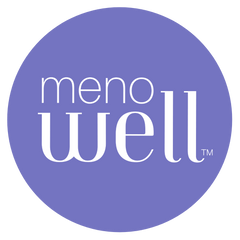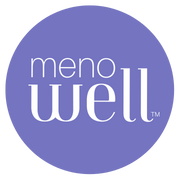Bone Up On Osteoporosis! Guest Post from Ellen Dolgen of Menopause Mondays

By Ellen Dolgen
At Bossa Bars we believe in sharing important information and updates that directly affect your nutrition, health, and vitality. From time to time you will see guest posts on our blog, and we're delighted to have the highly respected menopause expert, Ellen Dolgen, as our very first guest!
At EllenDolgen.com, we have tackled many vital perimenopause, menopause, and postmenopausal topics such as hot flashes, night sweats, memory loss, mood swings, anxiety, loss of libido, insomnia, weight gain, painful sex, vaginal dryness, stiffness/muscle aches, hair loss, migraines, colonoscopies, meditation, the clitoris, pelvic floor dysfunction, HRT, breast cancer, thyroid disease, GSM, breast health, heart health, and so much more!
In addition to eating the deliciously satisfying healthy Bossa Bars this New Year, let’s bone up on osteoporosis!
The North American Menopause Society (NAMS) creates mission statements on various disorders that affect menopausal women.
NAMS recently released its latest 2021 mission statement in assessing, preventing, and treating osteoporosis in postmenopausal women, after enlisting a panel of experts in metabolic bone disease and women’s health to review and update the 2010 NAMS position statement.
So, what is Osteoporosis? According to the (NOF) National Osteoporosis Foundation, osteoporosis is a bone disease that causes the body to lose too much bone, make too little bone, or both. Osteoporosis means porous bone.
I reached out to Christine B. Chung, MD, at UC San Diego Health. Dr. Chung is a world-renowned musculoskeletal (MSK) radiologist, professor of radiology, clinical translational researcher, and the director of the UC San Diego’s MSK Imaging Research Group. Chung explained, “There are two basic parts of the bone that you can think of like a house. The outer shell is the cortical bone that is like the siding of a house. The inner part of the bone is called trabecular bone and is like the scaffolding of the house that makes all the rooms inside. When our bones are viewed under a microscope, a healthy bone has an outer shell (cortex) and an inner trabecular structure that looks like a honeycomb. One with osteoporosis has more significant spaces and holes in the outer shell and in the trabecular structure. The osteoporotic bone has less density or mass, and there just is not enough of it! When bones become less dense, they weaken and break easily.”
Bone loss is a silent process. The transition to menopause is the time when bone loss accelerates due to the loss of estrogen. It is important to note that there is no cure for osteoporosis. The average annual rate of bone loss is about 2%, beginning 1 to 3 years before menopause and lasting for 5- 10 years resulting in an average loss of BMD of 10%- 12% in the spine and hip across the menopause transition.
The foundation surveyed and found that most postmenopausal women were unaware that fracture is a risk factor for osteoporosis. They stress that women should not ignore fragility fractures as clumsiness but instead think of them as signs of bone health intervention. Chung further explained, “Fragility fractures mean that the weakened bone breaks with very little trauma. With severe osteoporosis (a lot of bone loss), something as simple as stepping off a stair could break the bone!”
To determine bone density, you’ll need to schedule a bone scan or bone mineral density (BMD) test. The most common – and widely accepted – test is a dual-energy X-ray absorptiometry (DXA) scan. Try saying that real fast! The bones most tested are those in the spine and hip, and sometimes the forearm is added. If you’re worried about radiation, have no fears. A DXA scan uses low-dose X-rays. According to the National Institutes of Health, you receive less than 1/10th the radiation dose you would get from a chest x-ray.
Dr. Chung put a little more meat on the bone for us about the DXA. She said, “The DXA scan only takes a few minutes (some machines are faster than others)! You need to lie very still on a table while an ‘arm’ attached to the side of the table moves from one end of it to the other. The DXA measures your bone density and gives a value called a T-score. This reflects how much your bone density differs from an average healthy 30-year-old adult. If your bone density is equal to an average 30-year-old, your T-score would be -1 or greater. If your T-score is -1 to -2.5, you have a low bone density (osteopenia).”
In North America, the standard criterion for the diagnosis of osteoporosis in postmenopausal women is a T-score of -2.5 or less at the lumbar spine (LS; at least two vertebral levels measured in the posterior-anterior projection but not the lateral projection), femoral neck (FN), or total hip (TH).
Here are some risk factors for low bone density:
- Advanced age
- Thinness
- Genetics
- Smoking
- Disease and drugs
Clinical Assessment:
Skeletal health assessment should be part of routine care for all postmenopausal women. Your annual exam should include measuring height and weight, assessing chronic back pain and kyphosis (an exaggerated forward rounding of the back), and clinical risk factors for osteoporosis, fractures, and falls. The most important risk factors for future fracture are a previous fracture history (risk is especially high in the first two years after an incident fracture), older age, and low BMD. All women should have bone mineral density testing if they have risk factors for low BMD or fracture. DXA is the preferred technique for BMD testing. For untreated postmenopausal women at low fracture risk, repeat DXA testing is not helpful until at least five years have passed unless rapid bone loss is anticipated. Vertebral imaging is appropriate for postmenopausal women aged 70 years and older or with historical height loss. Secondary causes of osteoporosis should be evaluated before osteoporosis treatment has begun.
The statement did address non-pharma treatments and lifestyle modifications. Take-Home Points:
- Postmenopausal women are encouraged to adopt lifestyle modifications such as eating a balanced diet with adequate intake of calcium and Vit D, being physically active, and avoiding harmful lifestyle habits such as smoking to support general bone health.
- The average dietary calcium intake in postmenopausal women in the US and Canada is 700mg to 800mg. They say that few women need to take more than 50 mg to 600mg of a calcium supplement to achieve the IOM (Institute of Medicine) recommended daily intake. As in any supplement, it is probably best to get your D3 tested to see if you are deficient before taking supplements. The IOM recommends 600IU for women aged between 50 and 70 years and 800 IU for those over 70. They noted that severe deficiencies might be harmful in the studies, but intakes more than the threshold to avoid deficiency do not provide additional benefit.
- There is no evidence that Vit K affects bone density or vertebral fracture risk in postmenopausal women and the evidence was insufficient to confirm a reduction in clinical fractures. Neither is there any evidence that phytoestrogens, including isoflavones, boron, zinc, black cohosh, berberine, or dehydroepiandrosterone, affect BMD or fracture risk in postmenopausal women.
Pharma treatment options were addressed:
There are new advances in preventing and treating osteoporosis, such as preparing conjugated estrogens combined with bazedoxifene instead of a progestin. Two bone-building drugs have been approved to treat women with osteoporosis at high risk for fracture.
The report suggests that Hormone Therapy (HT)is the most appropriate choice to prevent bone loss at the time of menopause for healthy women, especially for those who have menopause symptoms.
Anti-remodeling drugs such as bisphosphonates and denosumab are often used to treat osteoporosis patients. The statement recommends women at very high risk for fracture follow a new protocol of beginning treatment with a bone-building agent followed by an anti-remodeling agent. For more detail on the names of the drugs recommended, you can read through the NAMS 2021 Position Statement. Dr, Chung did stress that before you start any therapies, be sure you discuss potential side effects/complications with your doctor!
Here are Chung’s parting words of wisdom, “Don’t underestimate the importance of a holistic approach to musculoskeletal health and how dynamic the bones are!! We maintain bone mass by loading our skeleton (MOVING!) and by having muscles exert force on the bone (LEAN BODY MASS!).”
Though bones are the very structure of our bodies, we often forget how important they are! You can manage the progression by staying on an individualized protocol to help minimize bone loss, prevent fractures, maintain mobility.
Be proactive about your bone health!
Remember: Suffering in silence is OUT! Reaching out is IN.
Sign up for Menopause Mondays® Hot News Flashes
Be sure to follow me on Instagram @menopause_mondays.
Download my free eBook: MENOPAUSE MONDAYS The Girlfriend’s Guide to Surviving and Thriving During Perimenopause and Menopause.
Sign up for my fun YouTube Videos!



